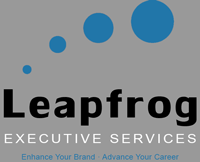The Ripples of Covid-19 on HR Leadership
Category : 2020
When some stones in life hit water, the ripples never stop.
~ Those who lived through the Great Depression have attics and garages full of things they’ll never use—but they can’t live without.
~ The Berlin Wall has been down more years than it divided Germany, but the shadow of its gun towers and barbed wire still linger in the minds of those who lived through it.
~ 9/11 forever changed the way airports and airlines manage passenger security.
~ The 2008 loan crisis added layers of complexity to lending and slowed the flow of credit to consumers.
~ A virus that debuted in early 2020 has dramatically altered the way we travel, eat, and visit grandparents.
Depending on who you ask, some will advocate that we are at the midpoint of the COVID-19 pandemic and on the verge of effective vaccines that cradle the hope of a return to pre-pandemic lifestyles. While we look forward to resuming “life as we knew it,” a more candid assessment would tell us the ripples of the COVID stone will continue for months after vaccines are in-play.
While it is easy to see how the pandemic has dramatically changed the way we work, COVID’s ripple effect has also altered what companies need to thrive. Specifically, HR leadership roles now incorporate a broader set of responsibilities and a greater set of expectations. In addition to the litany of traditional HR functions and accountabilities, the C-suite is now looking for senior HR leaders to provide enhanced contributions in these key areas.
Financial Acumen – Senior leadership now expects HR executives to create people strategies that align with and positively impact cash flow, profitability, asset management, consistent growth, and, of course, human capital. More than ever, the credibility of HR and the ability of HR leadership to win investments depends on a leader’s ability to fluently articulate the company’s market position and tangibly demonstrate how HR integrates with the larger picture of where and how investments will produce a quantifiable return.
Organizational Design – For most organizations, COVID-19 has retro-fitted steady state from an expectation to an aspiration. Companies that aren’t capsizing in the ripples of this pandemic have learned to operate as highly fluid organisms with a low level of viscosity. HR leaders wanting to bring value and thrive in structuring the organization must demonstrate decisiveness and agility, moving with confidence and timeliness in a frequently-changing, highly ambiguous environment.
Visible Leadership – Unlike traditional market forces that influence company performance, COVID-19 is unavoidably and undeniably first, a people issue. The pandemic’s force on business results is the consequence of how the virus has impacted people across the globe. The unique dynamics of this situation singularly position HR leaders to assume a more visible role. This is the time for HR executives to be a stabilizing influence that instills confidence, nurtures hope, and drives performance through authenticity and transparency.
Innovative Agility – Innovation is often categorized as progressive—incremental improvement or enhancements or disruption—bringing a forceful and transformative adaptation or alteration to a business or industry. This pandemic’s ripple effect is a clarion call for HR executives to aim for more than incremental improvements in benefits and people policies. COVID is presenting HR strategists with a unique opportunity to redefine the way leaders influence people across an organization, reimagine what employee engagement looks like, and construct a new model for how people work together in a workplace with fewer walls and different opportunities. If you need help identifying the person who best aligns with your organization as you chart a path into 2021, we’re ready to assist. Give us a call to explore the possibilities.
